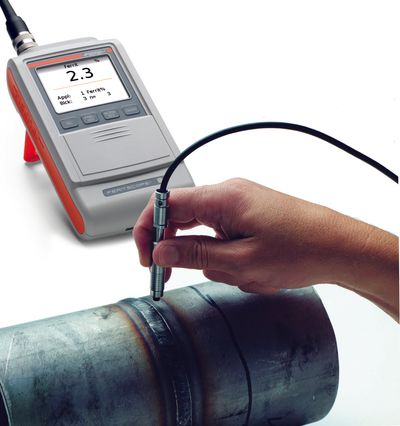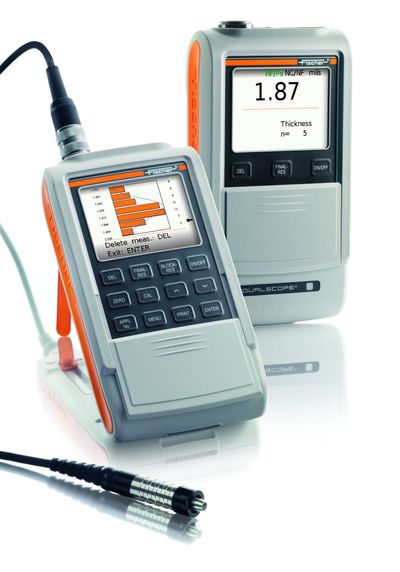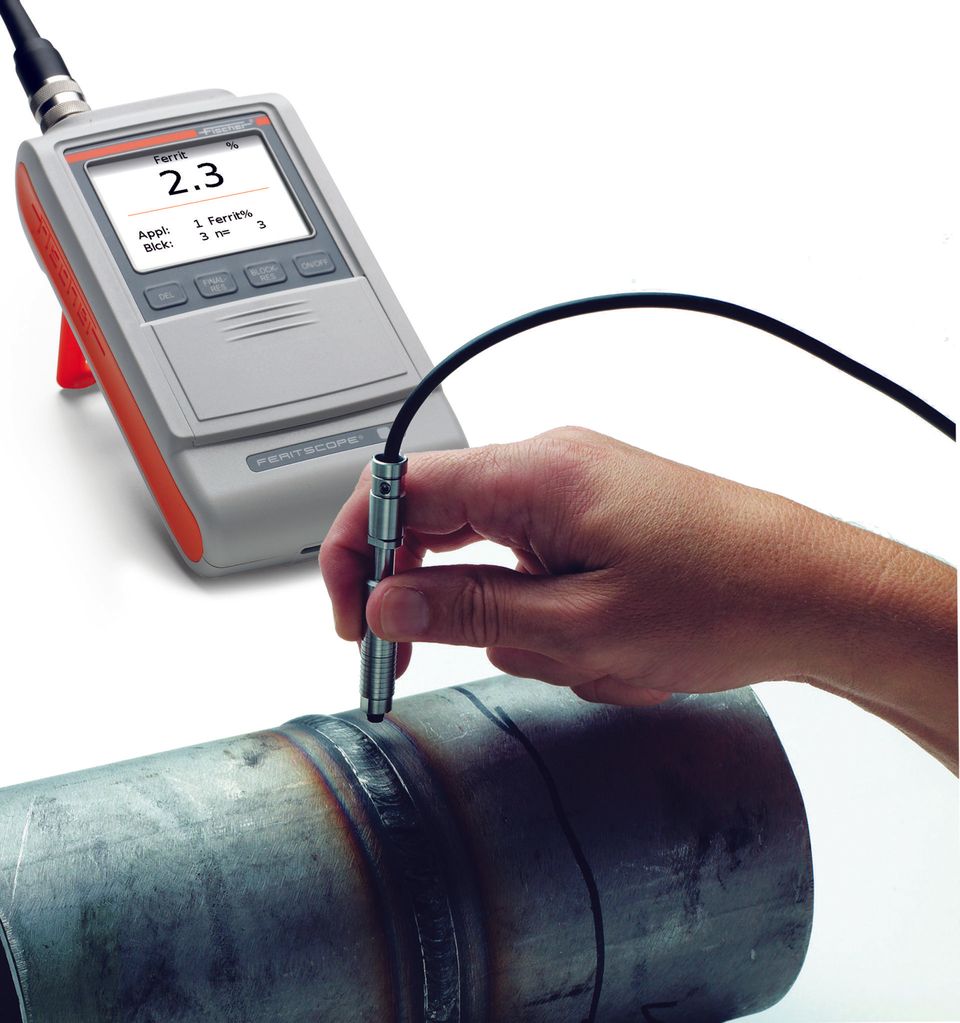Fischer Feritscope® FMP30C
Fischer Feritscope® FMP30C
Simple and Quick Measurements
Features
- Robust device for fast and exact determination of ferrite content onsite
- Color Display
- Display of the measured value in ferrite percentage (% Fe) or as ferrite number (FN)
- Large and easily readable display with comprehensive functions
- Measures automatically as soon as the probe is applied or with a millisecond delay
- Various probes available for reliable measurement even in hard-to-reach areas
- Full set of ferrite range standards for calibration.
- Just one calibration required for the entire measurement area
- Also available as a module with full functionality for the stationary measurement instrument MMS® PC2
- Built in stand
- Measurement capture
- Fast measurement and data storage
- Automatic measurement acquisition upon probe placement or through “external trigger”
- Enabled or disabled acoustic signal
- Overwriting of erroneous measurements or previously stored readings
- Adjustable tolerance limits
- Measurement data presentation as an analog bar with display of specification limits
- Continuous display: Continuous display of the reading when probe is placed on the specimen;storing with externally triggered measurement acquisition
- Outlier rejection function for the automatic elimination of erroneous measurements
- Matrix measurement mode: Measurement data storage in blocks that are set up in the application in the form of a matrix. Block change manually or automatically in the specified sequence
- Measurement data averaging: Only the mean value of a specified number of single readings is stored
- Automatic block creation: Number of single readings per block
- Area measurement: Continuous measurement acquisition until the probe is lifted off; only the resultant mean value is stored
- Continuous measurement acquisition and storage
Data Memory
- Up to 20,000 readings and 100 applications for measurement data and application‑specific calibrations
- Separation of the measurement data in up to
- 4,000 blocks
- Date and time stamp for the blocks
Evaluation
- Statistical evaluation of measurement series with mean value, standard deviation, max and min value, range
- Computation of the process capability indices cp and cpk
- Output of characteristic variance‑analytical values
- Graphical measurement presentation as a histogram with a Gaussian bell curve
Interfaces
- USB port for data transfer to a PC or printer
- Optional Bluetooth® module, interface for wireless data transfer to a PC (up to 10 m)
- Optional COM module, serial interface for data transfer to a PC or printer (cable length up to 12 m)
Calibration
- Only one calibration required for the entire relevant measurement range from 0.1 to approx. 90 FN.
- Adherence to the measurement accuracy specified in standard ANSI/AWS A4.2M/A4.2:1997
- Calibration using calibration standards traceable to TWI secondary standards or customer‑specific standards
- Linking applications: Common normalisation/calibration of applications
Calibration / Standards
Magnetic Induction Method
Common Questions
- Do you carry Feritscopes, FMP20, FMP30, FMP40, MMS Inspections, Dualscopes
- How often do you unit need to be calibrated?
In order to meet and/or maintain most quality programs on quality control equipment, statements of calibration or calibrations must be performed every 6 to 12 months.
- What type of calibrations does Vernier Sales offer?
VSI can provide 17025 calibrations if needed through a partnering company and follows original manufacturer's specifications.
- What calibration or tracking systems do you use?
We have implemented GageTrak to provide more in-depth certifications and tracking information.
- Do the units come certified?
All of the instruments certified will be within the original manufacturer's specifications. The instrument's calibration function has been checked my performing a test calibration using precision secondary thickness standards which are traceable to the National Institute of Standards which are traceable to the National Institute of Standards and Technology (NIST). The test calibration was found to be capable of producing measurements accuracy of the standards measurement within an interval of ± 5%.
- How long do repairs take?
We understand how important your equipment is to your operation. Therefore, we give prompt attention to all repairs. A priority service is available that with a turnaround usually of your unit within 24-48 hours of our receiving it for repairs. In most instances repairs, can be on-site within a few weeks of notification or you may send your unit in for service, turnaround in about 2 days to a week. Diagnostics and repair may take longer depending on parts and availability.

N E E D T O K N O W



